
views
Prepping the Floor

Make sure that the water-based polyurethane coating is fully cured. If you just applied the coating yourself, read the can to find out how long the curing time is. Some brands take longer than others, but it is typically between 30 to 60 days. If you don't know whether or not it's fully cured, consider waiting 30 to 60 days. If the surface is cool to the touch, it's not dry. If you sand it lightly and get a fine powder, it is dry and ready to go.
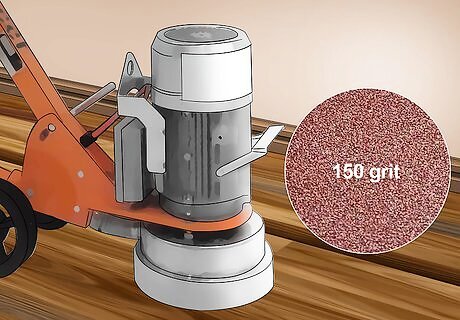
Buff the old finish with fine grit sand paper. Choose something that is around 150-grit. You can do this with sandpaper or with a power buffer. Use a light touch while buffing so that you don't accidentally cut through the water-based finish.
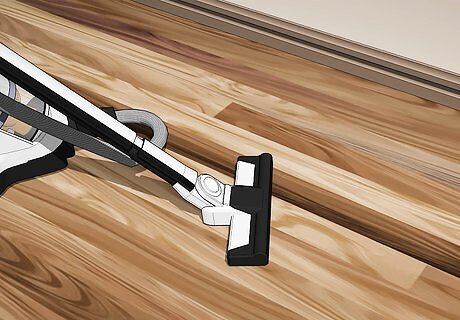
Clean the surface and your workspace thoroughly. Wipe smaller surfaces clean with a dry cloth and vacuum larger ones. Lastly, vacuum the floor to get rid of any traces of dust.
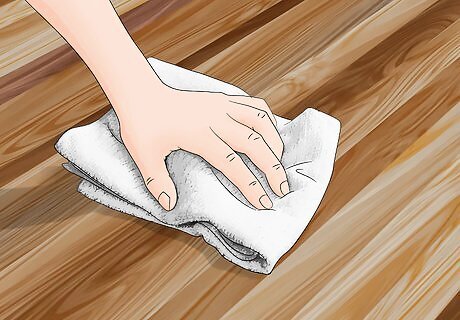
Wipe the surface with a clean cloth. A damp that's been dampened with mineral spirits will work the best. Alternatively, you can use a tack cloth of a dust cloth. This will get rid of any dust, which may mar your final finish.
Setting Up Your Work Area

Ensure that you have adequate ventilation. This is very important. Not only will you be working with lots of sanding and dust, but you will also be working with chemicals. If it is not possible to take your project outside or into an open garage, open up a window.

Put on a respirator. Make sure that it is rated for organic fumes. This will help further protect your lungs against the harmful dust and fumes.
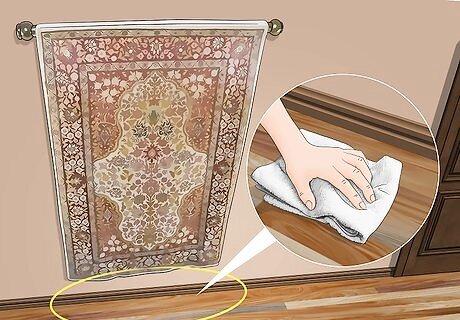
Ensure that the room is dust-free. This means vacuuming the room and wiping down your work surface. If you have something in the room that might give off dust, such as a hanging rug or tapestry, it would be a good idea to remove it temporarily. You don't want to see any dust particles floating in the room.
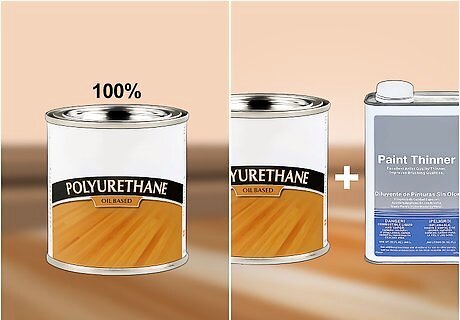
Decide if you want to use the polyurethane at half or full strength. Using it at half strength will make it act more like a wiping varnish. It dries faster and is easier to sand. If you want to use it at half strength, you'll need to dilute it with paint thinner.
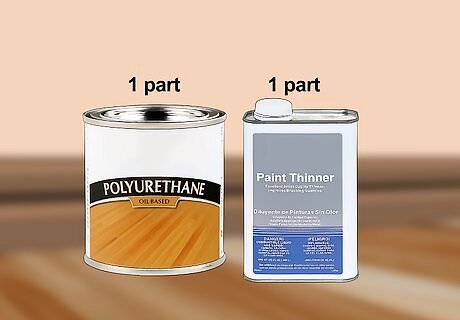
Dilute the polyurethane, if needed. Purchase two cans of oil-based polyurethane. Set one of the cans aside to use for later layers. Dilute the remaining can with equal amounts of paint thinner. Not all paint thinners are suitable for oil-based polyurethane finishes. Make sure that you use the right kind.
Appling the Oil-Based Coating
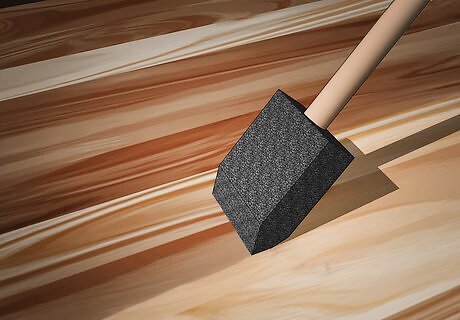
Apply the polyurethane using a wide brush. Choose a bristle or foam brush that is about 2 inches (5.08 centimeters) wide. Make sure that you brush with the wood grain rather than against it. If you get any bubbles, brush back over them lightly; this will help them pop. If you diluted one of your cans of polyurethane, then you should apply the diluted one now.
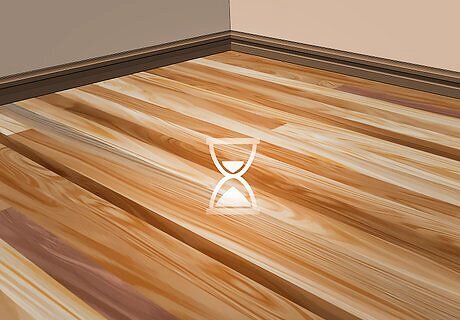
Allow the first coat to dry and cure. How long this takes depends on the brand you are using. Most oil-based polyurethane finishes will cure overnight if it is warm enough. Some may take much longer, so read the instructions on the label carefully.
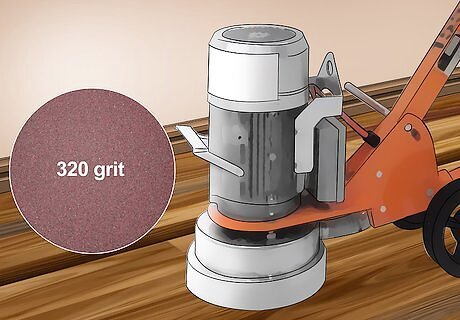
Sand the first coat smooth. Use sandpaper or a power buffer that is at least 280-grit; 320-grit would be better, however. Once again, use a light touch so that you do not sand through it.

Wipe the dust away with a tack cloth. A tack cloth is a special, sticky cloth for this exact purpose. You can buy one at a paint supply store. If you can't find a tack cloth, you can vacuum the dust up instead. It would still be a good idea to wipe the surface down with a damp cloth, however.
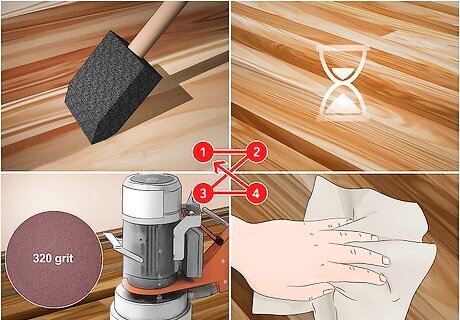
Apply two more coats in the same manner. Let each coat cure first, then sand it smooth. Wipe the coat clean with a tack cloth, then apply the next one.

Allow the final coat to cure completely. Once the coat cures, you can use the wooden piece. If you coated a floor, then you can move back all of your rugs and furniture. If you want a high-gloss finish on your piece, then continue on to the next section to learn how to obtain it. After the final coat, use a piece of cardboard to buff the surface and make it especially smooth. A high-gloss finish is not necessary or recommended for floors.
Polishing the Surface (Optional)
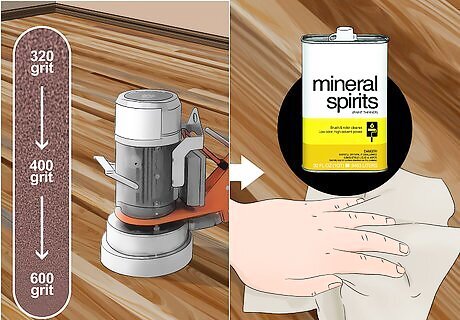
Sand the surface with increasing grits of sand paper. Start with a 320-grit, then move onto a 400-grit, and finally 600-grit. Use the same method as before, then wipe the surface clean with a cloth dipped in mineral spirits.

Apply a thin coat of aerosol polyurethane. Shake the can for the amount of time recommended on the label. Hold it 12 to 16 inches (30.48 to 40.64 centimeters) away from the surface, and spray on a light coat using a sweeping motion.
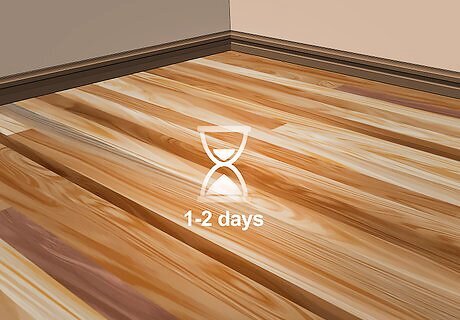
Allow the coat to dry and cure. This should only take a couple of hours, but it may take up to a day or two. If the coating feels tacky to the touch, it is not cured.
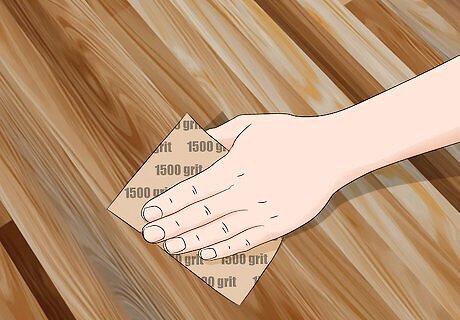
Buff out any pieces of dust, if necessary. Shine a bright light on the surface, and take a look at it from an angle. If you see any specks of dust, you'll need to gently buff them out with 1,500-grit sandpaper. If you don't have any on hand, you can use a brown paper bag instead.

Polish the piece with a soft, cotton cloth or a polishing pad. Gently go over the entire piece using small, circular motions. Keep polishing until you get the level of shine you desire.
















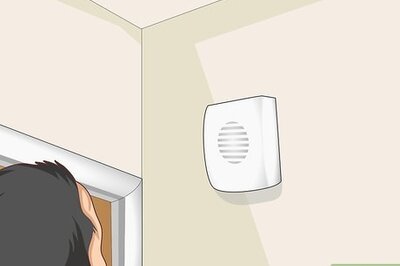


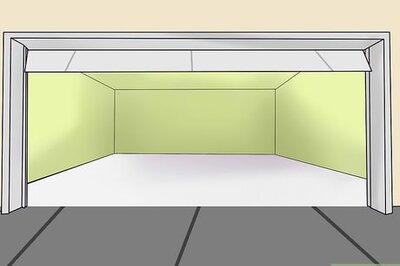
Comments
0 comment